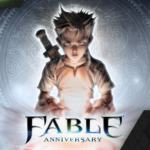Microsoft is pushing forward with a bold update to its Game Pass service. This week, the company announced expanded benefits for Xbox Game Pass Ultimate and PC Game Pass members.
These new perks focus entirely on free-to-play games.
This update goes beyond previous offers. It adds exclusive content to today’s most popular online multiplayer titles. Now, Game Pass is about more than just access to complete games.
To start, members will gain immediate in-game benefits. These include cosmetics, characters, skins, and in-game currency. These bonuses apply to several free-to-play games that millions play daily.
This first wave includes Smite 2, The Finals, Naraka: Bladepoint, and Heroes of the Storm. These games span multiple genres and player bases and represent a significant slice of the free-to-play ecosystem.
Moreover, the update doesn’t stop there. Microsoft confirmed that Call of Duty: Warzone and Enlisted will join the benefit program in April 2025, and more titles may follow throughout the year.
That means Game Pass subscribers won’t just play games. They’ll start ahead of the competition. They’ll get early access to characters, customization, and content that others often have to grind—or pay—to unlock.
This shift is not accidental. Microsoft is signaling its intent to redefine what a subscription service can offer. Game Pass is evolving into something broader.
The company has made strategic moves in this direction in recent years. For instance, members now have access to all the champions in the League of Legends.
Similarly, all agents in Valorant and rotating skins in Overwatch 2 are part of the deal.
These games rely on live service models. They profit by selling characters, cosmetics, and seasonal content. By offering these items to subscribers, Microsoft challenges that model and adds value in a new way.
Players no longer need to choose between subscriptions and microtransactions. Game Pass offers both. It adds real-world value to digital goods that usually cost extra.
Accessing these benefits is also user-friendly. Subscribers need to link their Xbox profile to the game account. After that, they launch the game on a console or PC.
Once linked, the game will automatically unlock the associated rewards—no codes, no extra steps—load the game and enjoy the perks.
This ease of use is key. Microsoft wants subscribers to feel immediate benefits; instant rewards lead to more engagement and satisfaction.
Meanwhile, including high-profile titles like Warzone signals a more significant strategy. These games already have enormous player bases; by tapping into them, Microsoft broadens its reach.
Game Pass isn’t just about content access anymore. It’s about content enhancement. Players who subscribe now gain more than those who don’t.
And that’s the point. Microsoft is creating a value system that rewards ongoing membership. Perks like these encourage long-term commitment.
In doing so, the company is aiming for dominance. Game Pass already offers hundreds of downloadable games, but that library alone isn’t enough in 2025’s competitive landscape.
Players expect more. They want services that support the games they already play and look for ways to enhance their existing experiences.
It is where Microsoft’s new move shines. Many free-to-play titles dominate players’ time. Adding perks to those games increases Game Pass’s daily relevance.
You don’t just fire up a Game Pass title. You launch Warzone, League, or The Finals and benefit from being a subscriber. It turns daily play into a reward loop.
Furthermore, this tactic helps Microsoft stand out. Competitors like Sony’s PlayStation Plus and Amazon Luna offer games, too. However, no benefits are integrated across third-party titles to this extent.
Game Pass now feels like an extension of your overall gaming identity. It travels with you into different titles. And that stickiness could be game-changing.
Additionally, Microsoft’s approach plays into current trends. Live-service games continue to dominate charts. Fortnite, Apex Legends, and others show no signs of slowing down.
Instead of competing with these games, Microsoft has chosen to support them. In doing so, it piggybacks on their success, and subscribers win.
This tactic also reflects feedback from the gaming community. Players have long expressed fatigue with microtransactions. Game Pass offers an alternative path.
Players can subscribe once and enjoy ongoing rewards rather than spending $10 here and $20 there. This model simplifies spending and maximizes value, and it could shift how players budget for games.
Still, Microsoft isn’t just handing out freebies. These perks come with a catch: a sustained subscription. Cancel your Game Pass, and the benefits vanish.
This encourages retention, builds a habit loop, and reinforces that Game Pass is essential, not optional.
This model works in other industries, such as Amazon Prime, Netflix, and Spotify. Perks stack over time, making the service harder to leave.
Game Pass is moving in that direction. With every new benefit, Microsoft cements its place in players’ lives. It’s not just a subscription—it’s a lifestyle.
Expect more changes ahead. Microsoft may expand these perks further, and more games will likely join the list before the year ends.
Developers also benefit from this partnership. Game Pass perks can boost player engagement, reduce churn, and increase visibility. Everyone involved sees the upside.
In the end, Microsoft’s new strategy reveals a deep understanding of modern gaming. Players want convenience, rewards, and value.
Game Pass delivers all three. And it’s doing so in a way that feels sustainable.
This update is just the beginning. As more games join the program, the benefits will grow. The more you play, the more you’ll get.
That is Microsoft’s endgame: keeping players subscribed, playing, and happy.
- 107shares
- Facebook Messenger
About the author
Fahad Hameed is an expert in consumer technology and tech developments, with an MSc in Electrical and Computer Engineering from Khalifa University. He offers his unique insights on high-tech science breakthroughs, having worked as a consultant for the industry’s top fortune 500 companies. His research focuses on finding new ways to apply emerging technologies to solve real-world problems.





